So. Farewell
Then
Dizzy Gillespie
Famous jazz
Trumpeter.
You were known
For your
Bulging cheeks.
Rudolf Nureyev
So were
You.
— E.J. Thribb
So. Farewell
Then
Dizzy Gillespie
Famous jazz
Trumpeter.
You were known
For your
Bulging cheeks.
Rudolf Nureyev
So were
You.
— E.J. Thribb
In 1849, to serve as “an introduction to the abstract worship of Humanity,” Auguste Comte proposed a new calendar with 13 months of 28 days. A festival day commemorating the dead brought the total to 365 days, but the extra day fell outside the regular cycle of days of the week, so the first of each month always fell on a Monday. Months were named after great figures in the history of Western Europe:
To keep things on track, leap years added a second festival day, commemorating holy women. The calendar “contains the names of 558 great men of all periods, classified according to their field of activity,” and villains of history, notably Napoleon, were held up to “perpetual execration.”
The scheme has a pleasing mathematical tidiness: Each year contains exactly 52 weeks falling into 13 months, and each month has exactly 28 days comprising four weeks. The whole thing remains consistent from year to year — if you were born on a Wednesday, your birthday would always fall on a Wednesday. And since all months contain the same number of business days and weekends, statistical comparisons by month are more accurate.
It never caught on, in part because of those month names. Science writer Duncan Steel notes that “it would seem strange to give the date as the third day of Homer, and with a month named for the bard a reference to ‘Shakespeare’s Twelfth Night’ would be ambiguous.”

Each of three houses must receive water, gas, and electricity. Is it possible to arrange the connections so that no lines cross?
No, it ain’t. Remove one house and draw connections to the other two:
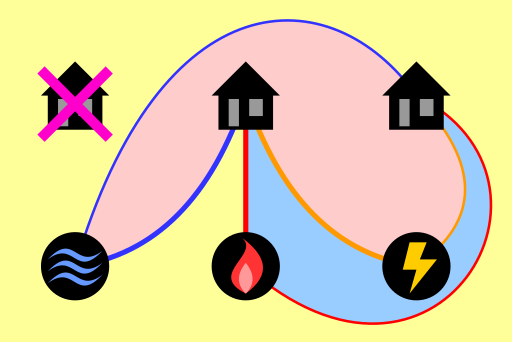
This divides the plane into three regions, here colored red, yellow, and blue. Placing the third house into any of these regions denies it access to the correspondingly colored utility. So the task is impossible.
Pleasingly, the task can be accomplished on a Möbius strip:

And a torus can accommodate up to four houses and four utilities:
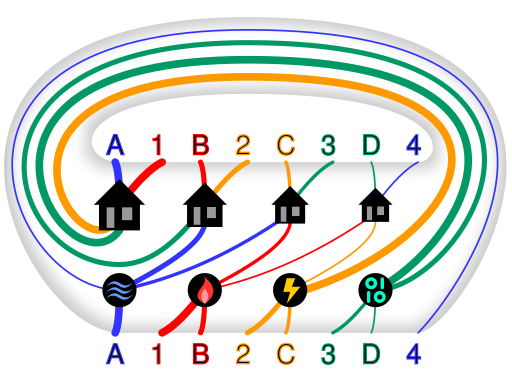
(By Wikimedia user CMG Lee.)
08/31/2025 UPDATE: Reader Guy Bolton King points out that Mathsgear sells a mug embossed with the puzzle. The joke here is that this makes the puzzle solvable — like the torus, the mug is of topological genus 1, “a blob with 1 hole in it,” so it admits the same solution.
And reader Shane Speck writes, “My sneaky solution … has always hinged on the fact that in reality, houses don’t all have separate pipes, and popping on a shared water pipe instantly reduces the problem to the status of incredibly trivial”:
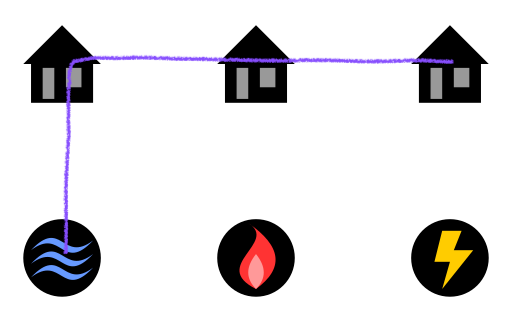
“The problem doesn’t, after all, say you can’t do that… :)”
(Thanks, Guy and Shane.)
What’s the final digit in the product of all the odd numbers from 1 to 99?
Working in the Indian Medical Service in 1897, British physician Ronald Ross discovered a malarial parasite in the gastrointestinal tract of a mosquito, proving that these insects transmitted the disease. He sent a poem to his wife that’s now inscribed on a monument in Kolkata:
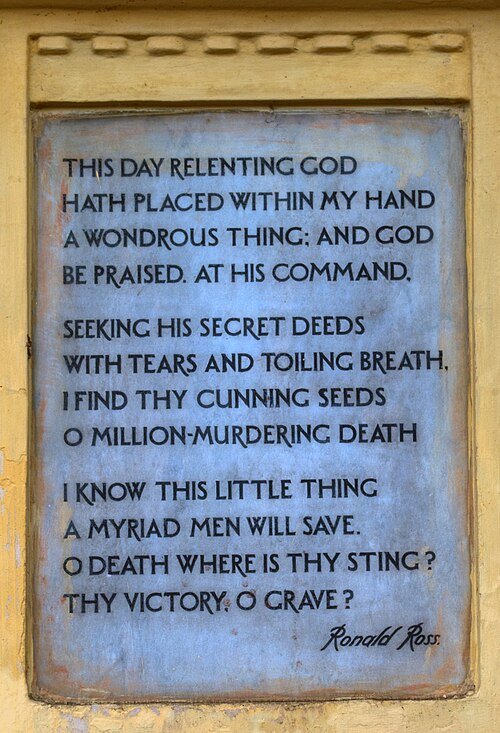
He won the Nobel Prize for Physiology or Medicine in 1902, the first British Nobel laureate.
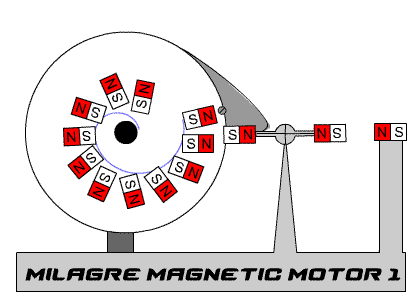
This is clever — a perpetual motion machine driven by magnets.
Unfortunately, such a machine simply doesn’t work — without an external energy supply, it quickly stops moving.

Why is the night sky dark? If the universe is static and infinitely old, with an infinite number of stars distributed homogeneously in an infinitely large space, then, whatever direction we look in the night sky, our line of sight should end at a star. The sky should be filled with light.
This puzzle is most often associated with the German astronomer Heinrich Wilhelm Olbers, but Edgar Allan Poe made a strikingly similar observation in his 1848 prose poem Eureka:
Were the succession of stars endless, then the background of the sky would present us a uniform luminosity, like that displayed by the Galaxy — since there could be absolutely no point, in all that background, at which would not exist a star.
Poe suggested that the universe isn’t infinitely old: “The only mode, therefore, in which, under such a state of affairs, we could comprehend the voids which our telescopes find in innumerable directions, would be by supposing the distance of the invisible background so immense that no ray from it has yet been able to reach us at all.” We now know that the sky is dark because the universe is expanding, which increases the wavelength of visible light until it appears dark to our eyes.
If an angle of one degree is viewed through a lens with 4x magnification, how big will the angle appear to be?
Tho’ my verse is exact,
Tho’ it flawlessly flows,
As a matter of fact
I would rather write prose.
While my harp is in tune,
And I sing like the birds,
I would really as soon
Write in straightaway words.
Tho’ my songs are as sweet
As Apollo e’er piped,
And my lines are as neat
As have ever been typed,
I would rather write prose —
I prefer it to rime;
It’s less hard to compose,
And it takes me less time.
“Well, if that be the case,”
You are moved to inquire,
“Why appropriate space
For extolling your lyre?”
I can only reply
That this form I elect
‘Cause it pleases the eye,
And I like the effect.
— Bert Leston Taylor

The distinctive smells of spearmint and of caraway seeds are produced by mirror images of the same molecule, carvone.
The fact that we can distinguish these smells shows that our olfactory receptors can sometimes discern the “handedness” of such molecules. But this isn’t the case with every set of “enantiomers.”